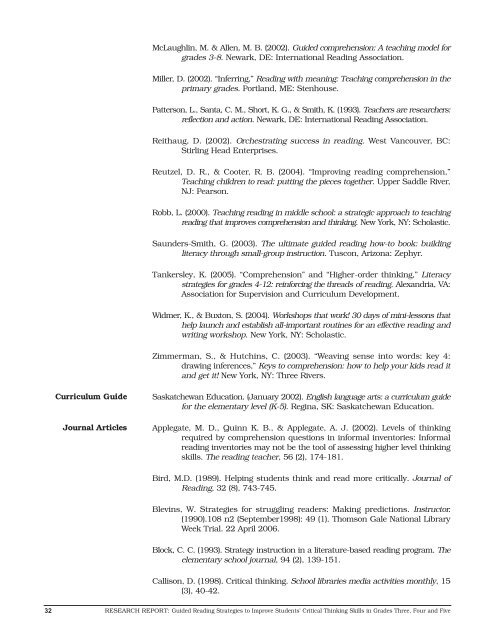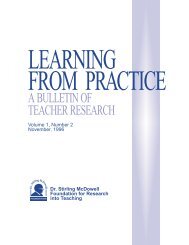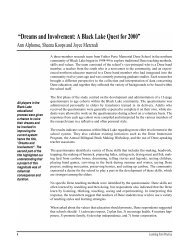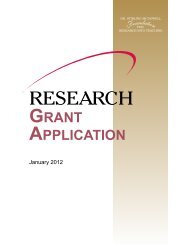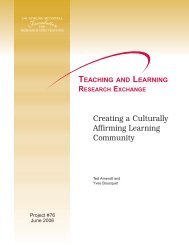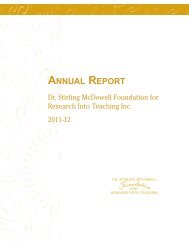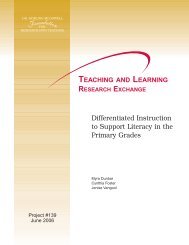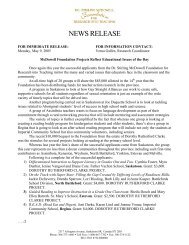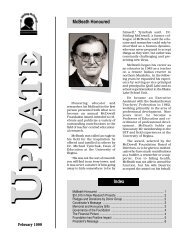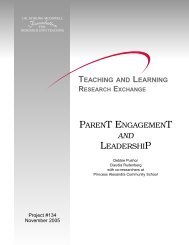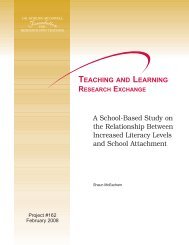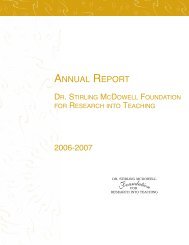Guided Reading Strategies to Improve Students - Dr. Stirling ...
Guided Reading Strategies to Improve Students - Dr. Stirling ...
Guided Reading Strategies to Improve Students - Dr. Stirling ...
- No tags were found...
Create successful ePaper yourself
Turn your PDF publications into a flip-book with our unique Google optimized e-Paper software.
McLaughlin, M. & Allen, M. B. (2002). <strong>Guided</strong> comprehension: A teaching model forgrades 3-8. Newark, DE: International <strong>Reading</strong> Association.Miller, D. (2002). “Inferring,” <strong>Reading</strong> with meaning: Teaching comprehension in theprimary grades. Portland, ME: Stenhouse.Patterson, L., Santa, C. M., Short, K. G., & Smith, K. (1993). Teachers are researchers:reflection and action. Newark, DE: International <strong>Reading</strong> Association.Reithaug, D. (2002). Orchestrating success in reading. West Vancouver, BC:<strong>Stirling</strong> Head Enterprises.Reutzel, D. R., & Cooter, R. B. (2004). “Improving reading comprehension,”Teaching children <strong>to</strong> read: putting the pieces <strong>to</strong>gether. Upper Saddle River,NJ: Pearson.Robb, L. (2000). Teaching reading in middle school: a strategic approach <strong>to</strong> teachingreading that improves comprehension and thinking. New York, NY: Scholastic.Saunders-Smith, G. (2003). The ultimate guided reading how-<strong>to</strong> book: buildingliteracy through small-group instruction. Tuscon, Arizona: Zephyr.Tankersley, K. (2005). “Comprehension” and “Higher-order thinking,” Literacystrategies for grades 4-12: reinforcing the threads of reading. Alexandria, VA:Association for Supervision and Curriculum Development.Widmer, K., & Bux<strong>to</strong>n, S. (2004). Workshops that work! 30 days of mini-lessons thathelp launch and establish all-important routines for an effective reading andwriting workshop. New York, NY: Scholastic.Zimmerman, S., & Hutchins, C. (2003). “Weaving sense in<strong>to</strong> words: key 4:drawing inferences,” Keys <strong>to</strong> comprehension: how <strong>to</strong> help your kids read itand get it! New York, NY: Three Rivers.Curriculum GuideJournal ArticlesSaskatchewan Education. (January 2002). English language arts: a curriculum guidefor the elementary level (K-5). Regina, SK: Saskatchewan Education.Applegate, M. D., Quinn K. B., & Applegate, A. J. (2002). Levels of thinkingrequired by comprehension questions in informal inven<strong>to</strong>ries: Informalreading inven<strong>to</strong>ries may not be the <strong>to</strong>ol of assessing higher level thinkingskills. The reading teacher, 56 (2), 174-181.Bird, M.D. (1989). Helping students think and read more critically. Journal of<strong>Reading</strong>, 32 (8), 743-745.Blevins, W. <strong>Strategies</strong> for struggling readers: Making predictions. Instruc<strong>to</strong>r.(1990).108 n2 (September1998): 49 (1). Thomson Gale National LibraryWeek Trial. 22 April 2006.Block, C. C. (1993). Strategy instruction in a literature-based reading program. Theelementary school journal, 94 (2), 139-151.Callison, D. (1998). Critical thinking. School libraries media activities monthly, 15(3), 40-42.32 RESEARCH REPORT: <strong>Guided</strong> <strong>Reading</strong> <strong>Strategies</strong> <strong>to</strong> <strong>Improve</strong> <strong>Students</strong>’ Critical Thinking Skills in Grades Three, Four and Five


